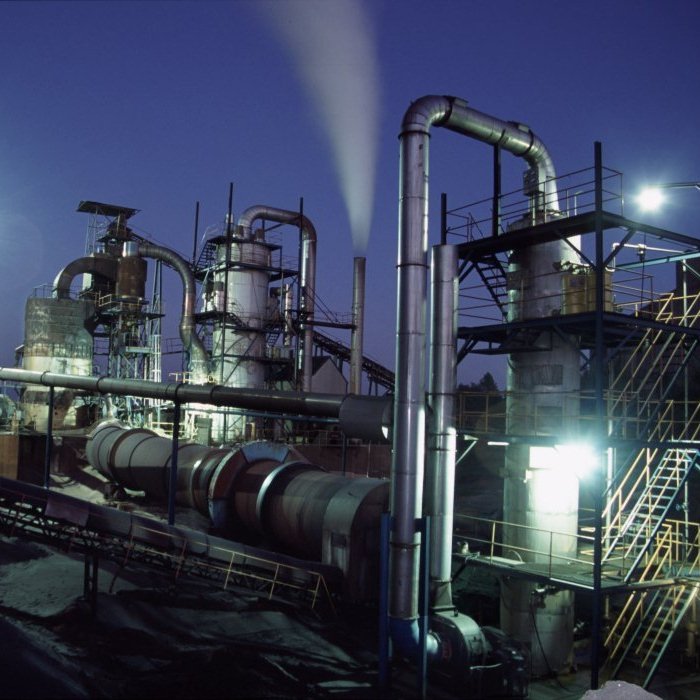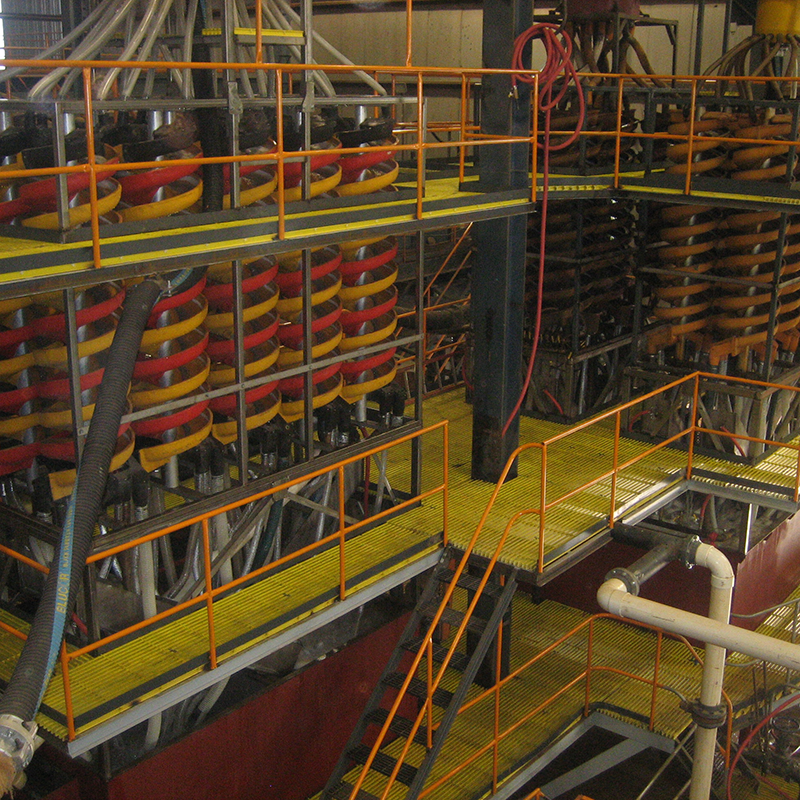How It’s Made / PART 2: Removing Impurities
Welcome back to the Kyanite’s How It’s Made series; where we delve deeper into the intricate processes involved in producing our kyanite products. In Part 1, we explored the initial steps of extracting raw kyanite from the earth and preparing it for refinement. Now, in Part 2, we’ll cover the meticulous process of removing clay, soil, pyrite, quartz, mica, iron oxides, and other impurities from the mined ore.
Quality Controls
At Kyanite Mining Corporation, we take pride in our commitment to exemplary quality and consistency. We ensure that every stage in our 20+ step beneficiation process is conducted with the utmost precision and care. Each step is monitored and tested in the plant ranging in frequency from once per shift to once per hour, depending on the process variable. Additionally, composite samples from each shift are tested daily in the Quality Control Lab.
Wet Separation: “The Float”
Once the mined ore has undergone sufficient comminution to achieve the liberation of all its mineral constituents, it enters the wet separation phase of KMC’s beneficiation process. We call this phase "the Float" because it involves several stages of froth floatation, but many other purification steps and technologies are employed alongside and in sequence with the flotation cells.
Water plays a pivotal role throughout this part of the process, with our facility utilizing approximately 10,000 gallons per minute. But only a fraction of this is fresh water as 95-98% of the water we use is recycled continuously to minimize environmental impact.
The mined ore is then meticulously sized using wet mills, hydro-sizers, and hydro-cyclones and then directed to the floatation and/or spiral circuits. Flotation plays on the hydro-phobic and hydro-philic tendencies of different minerals. These tendencies are accentuated in different aqueous chemical environments, created by the precise manipulation of pH and the measured use of chemical reagents. Spiral separation, on the other hand, relies on the differing specific gravities of various minerals to achieve separation. Once all the clay, quartz, mica and pyrite are removed, the resulting mid- stage product is “dewatered” on an extractor and then deposited in a large bulk storage facility that we call the Wet Bin.
Wet Bin with loader inside.
The Wet Bin holds close to 30,000 tons of Float concentrate, which is feedstock for the next/final stage in the purification process. The unique design of this building aids in further “dewatering”/drying the product. This large repository of intermediate stage product creates production flexibility for the company. The Wet Bin can be drawn from when repairs are happening at the Float and/or we can store Float concentrate when the Dryer is down for maintenance.
Dry Separation: “The Dryer”
Next, the Float concentrate enters "the Dryer," where the remaining moisture is driven off by heating it to 300-400°F. The product is then super-heated and subjected to an environment where the remaining iron-containing mineral impurities are converted to a magnetic form. After this crucial and energy-intensive step, the product is cooled and directed to ”the Magnet House”.
The Magnet House contains several banks of different kinds of magnets: low intensity/permanent drum magnets, high intensity magnets with variable intensity, and rare-earth magnets. This magnetic circuit, coming after the above-mentioned conversion step, removes the majority of iron present in the ore body. This ensures that our product meets its exacting iron specifications of less than 0.85% iron for our standard kyanite products and less than 0.19% for our Premium Grade products.
Our journey doesn't end here…
Keep an eye out for PART 3, the culmination of our How It’s Made series, where we'll explore the milling, sizing, and packaging of our kyanite products.
While the lifetime of these two Virginia deposits hasn’t been definitively determined, there is enough economically viable ore to continue mining for multiple generations at current production rates.




